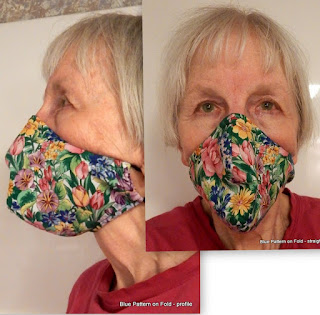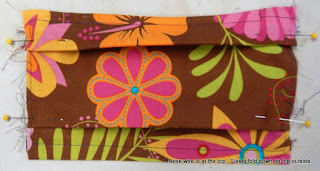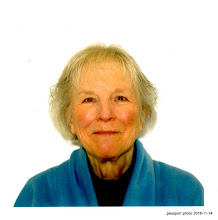My view is that everyone should cover their nose and mouth when going into any contained space, ie grocery, pharmacy, feed store (animals need to eat too), etc where the people on the cash registers MUST WORK or risk loosing their employment.
Many of us that sew are making cotton, washable masks for hospitals, nursing homes, convenience stores, small markets and others in need of masks. However, many people go without wearing anything. Something is always better than nothing.
If you have a bandanna or a pillow case that can be cut into a piece big enough to act as a bandanna, please do so.


The Bandito
The difference between the Bandito and a bandanna is only a simple dart in the nose area as well as making a knot in the free ends to get it closer to the body. This makes it cling to the face better that just using a bandanna. The tuck can be made my hand sewing, stapling, or other means of your invention. Maybe duct tape might work? If you can not alter the bandanna, just use as the bandits did, tie it in back without a dart.
The main idea is to get it as close to your face as possible + stop the flow of air and especially droplet leaving your mouth and nose. The knotted part hanging could be stuffed in a shirt or coat to decrease the air flow even more. Using a pillow case will increase the density of the material which will trap more particles. NO, this will not stop the virus. It will help. It will also help you from touching your face which is very important.
The BEST thing you can do is stay in your home. Only go out for absolutely necessary items such as medicine and food for you, family members, pets and others who can't get out.
Your eyes are also vulnerable to infection from this virus. Wear glasses or sunglasses to protect your eyes.
https://www.ecowatch.com/coronavirus-face-masks-2645078070.html
"All masks and goggles are of little use if the most important hygienic principles are neglected. For example, if you come home after a long bus or train ride, where you touched handrails and handles, take off the mask and scratch your nose, You could have left out the protective mask just as well."
When you come home from being in a confined space, slip off your shoes and leave them at the entrance. Take off your mask.
Alternative #1. Drop the mask on the hard floor or a container. Leave it alone for 4 or more days. The virus will die within the 4 days.
WASH your hands. Wash the sink handles, the door handle and anything else you touched.
Alternative #2. In your stocking feet, walk to the bathroom sink without touching any handles, take your mask off, drop it in the sink.
WASH your hands. Now wash is mask with LOTS of soap and water. Hang it to dry, or put it in the dryer, or iron it dry. Wash the sink handles, the door handle and anything else you touched.
Proper Hand Hygiene:
SOAP up, make lots of lather, WASH vigorously for 30-60 seconds.
Please remember that I am not a scientist. My information is gathered from the best sources I could find. One other important thing is NOT to touch your face, especially your eyes.



























